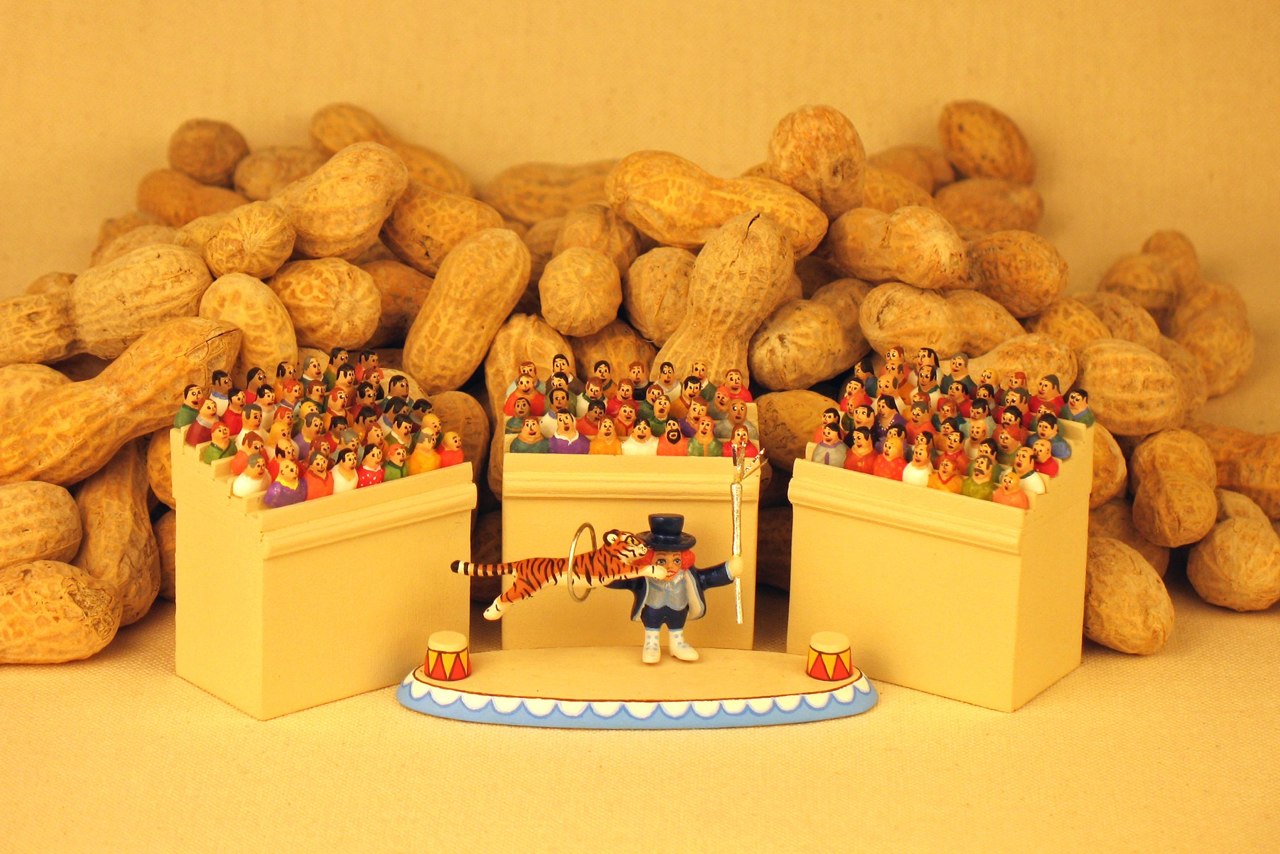Natasha Beshenkovsky Miniatures
| Website and Shop |
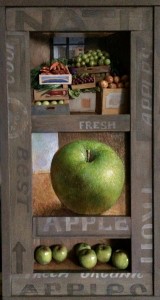 Can you describe your background in the arts?
Can you describe your background in the arts?
I have been a professional artist all my life. I started my professional training at the age of 11 when I entered an art school in Moscow under the supervision of Academy of Art, where I continued my training for 7 years. After that, I studied film at the Moscow Film Institute. I graduated as a director and focused on short, 3D-animated films. I designed, wrote and directed the films which were shot on flat tables and used props approximately the size of 1:12 dollhouse scale. Through my work in animation, I got great experience painting and sculpting in small scale.
When I came to this country, I was first trying to work in textile design. It wasn’t interesting or satisfying for me. My friend had read a New York Times article about the Guild Show. It was 1980 and there was tremendous interest in miniatures at the time. Museum-quality collections were kept by lots of collectors. I saw that new artists were welcome at the International Guild of Miniature Artisans’ Guild Show so I attended and saw what artisans were creating at the time. I thought, “I could do that,” and the next year, I was a dealer at the Guild Show and my work was featured on the cover of Miniature Collector. I started selling to collectors from the get go. I couldn’t create enough miniatures! I was always working on orders months ahead and my work sold immediately at shows.
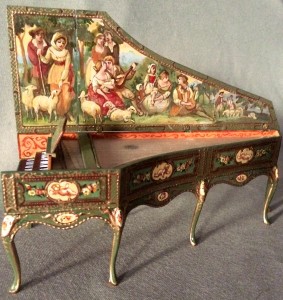 Twenty years ago, I came up with decoupage prints, “Natasha Mini Decoupage.” These were sheets of decoupage for people to decorate inexpensive pieces of furniture. When glued onto furniture, it looks handpainted. It’s a way for people to own work they consider mine, though it’s a reproduction. They were very popular and sold all over the world. Today, you can find them available through a few dealers and vendors.
Twenty years ago, I came up with decoupage prints, “Natasha Mini Decoupage.” These were sheets of decoupage for people to decorate inexpensive pieces of furniture. When glued onto furniture, it looks handpainted. It’s a way for people to own work they consider mine, though it’s a reproduction. They were very popular and sold all over the world. Today, you can find them available through a few dealers and vendors.
Through miniatures, I’ve met lots and lots of people. I have traveled all over this country and Europe. I’ve represented American miniatures in France where I was a guest of honor. In 2000, the Nassau County Museum of Art held a retrospective of my work. My current show at D.Thomas Fine Miniatures is a “15 years later” exhibition of my miniatures.
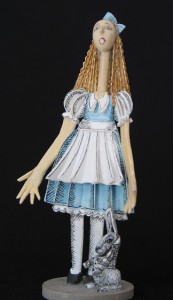 What is your favorite type of miniature to make?
What is your favorite type of miniature to make?
When I started working in miniature, my specialty was painted furniture of all styles, from the Renaissance to Art Nouveau. I made hundreds of elaborate screens, cabinets, French commodes, and so forth
I had an exhibition at Flora Gill Jacobs’ Washington Dolls’ House and Toy Museum where I showed environments with figures in them. I started making figures and became more interested in sculpture about 15 years ago. I would create small, cartoonish characters in different historical styles. I would make three dimensional images out of flat planes of wood. My most important work in this field was the Central Park panorama that included rollerbladers, families, strollers, trees, the landscape of New York, and more. Featured in Miniature Collector, it’s four feet long and belongs now to Holly June Browne, who commissioned this work.
What is the most challenging miniature to make, and why is it so difficult?
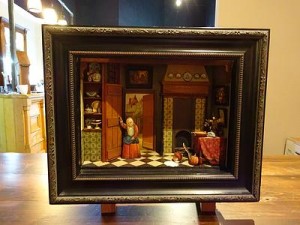 My shadow boxes, which are also often called 3-D paintings are different from most shadow and room boxes because they are designed to create a complete optical illusion. Trompe-l’œil or “Fool the Eye” style painting, distortion of proportions and shapes, forced perspective are used to create a magical space behind the frame, an illusion of much greater depth. Also, these shadow boxes are reproducing not the real world, but images in different artistic styles. These are the most challenging works for me.
My shadow boxes, which are also often called 3-D paintings are different from most shadow and room boxes because they are designed to create a complete optical illusion. Trompe-l’œil or “Fool the Eye” style painting, distortion of proportions and shapes, forced perspective are used to create a magical space behind the frame, an illusion of much greater depth. Also, these shadow boxes are reproducing not the real world, but images in different artistic styles. These are the most challenging works for me.
Can you tell us a bit about Still Life in Miniature, your work currently on display at D.Thomas Fine Miniatures?
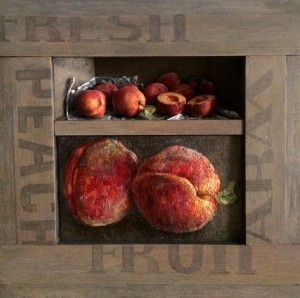 A variety of pieces are on display at D.Thomas Fine Miniatures, not only from different genres but also from different periods of art. One interior featured is the Kitchen in Delft, a Dutch-style shadow box in forced or exaggerated perspective; it is essentially a 3D painting.
A variety of pieces are on display at D.Thomas Fine Miniatures, not only from different genres but also from different periods of art. One interior featured is the Kitchen in Delft, a Dutch-style shadow box in forced or exaggerated perspective; it is essentially a 3D painting.
And there are two still life works, as well as painted furniture, animal sculptures and miniature paintings.
What’s your favorite period of art history?
My favorite is the work of 17th Century Dutch masters.
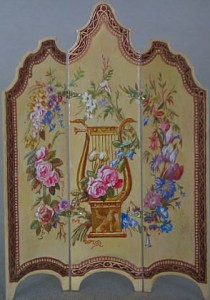 What advice would you give to new miniaturists?
What advice would you give to new miniaturists?
You cannot do miniatures unless you enjoy the process. If you pursue miniatures exclusively as a career or living, you must enjoy the process as it is insanely time consuming. It has to be play not work for you. Nowadays, people pay me for what I’d be doing anyway. Unless you have this feeling, it’s very hard, repetitive, and time consuming.
My advice is to challenge yourself, change subject matter, and change styles.
What’s your hope for the field of miniatures in the future?
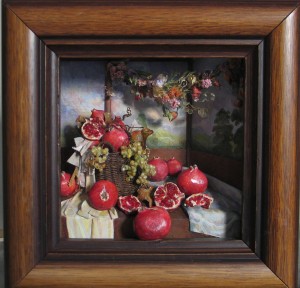 I honestly hope that there is a new wave coming. When I was starting, miniatures were booming. There was definitely an old generation of collectors who have since disappeared from the scene. There were no new artisans for awhile. I have a feeling it’s coming now: new collectors and new artisans. There’s a growing interest in the United States for handcrafted and artisanal things, and miniatures happy to be one of them,
I honestly hope that there is a new wave coming. When I was starting, miniatures were booming. There was definitely an old generation of collectors who have since disappeared from the scene. There were no new artisans for awhile. I have a feeling it’s coming now: new collectors and new artisans. There’s a growing interest in the United States for handcrafted and artisanal things, and miniatures happy to be one of them,
Miniatures were mostly historical, but it’s challenging and interesting to reflect our own contemporary life in miniature.
What inspires you?
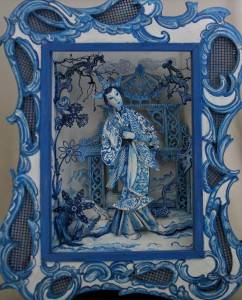 Art and thousands of years of miniature history inspire me. I enjoy visiting the The Cloisters branch of the Metropolitan Museum of Art, and often spend time looking at the reliquaries there; I find these religious objects to be inspiring.
Art and thousands of years of miniature history inspire me. I enjoy visiting the The Cloisters branch of the Metropolitan Museum of Art, and often spend time looking at the reliquaries there; I find these religious objects to be inspiring.
Why miniatures? What appeals to you most about what you do?
I started doing art when I was a child, so it’s a life function for me: sleeping, eating, and making art. I try to keep challenging myself.
What are you working on these days?
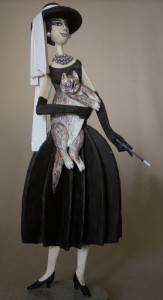 Recently, I started creating assemblages, which include full-size paintings on canvas, very realistic, almost photographic, combined with shadow boxes containing 3D miniatures of the same subjects. I showed some of these at Good Sam this past October. My largest work was sold to a prominent collector; people loved it even though part of the work was a little larger and not in 1:12 scale.
Recently, I started creating assemblages, which include full-size paintings on canvas, very realistic, almost photographic, combined with shadow boxes containing 3D miniatures of the same subjects. I showed some of these at Good Sam this past October. My largest work was sold to a prominent collector; people loved it even though part of the work was a little larger and not in 1:12 scale.
What’s to come from Natasha Beshenkovsky?
I’m showing work in a local art show by the Northern Manhattan Arts Alliance taking place in February and March. This organization gave me a grant to create miniatures, specifically the Central Park panorama. I believe I’m the first miniaturist to receive a grant from an arts organization to create miniatures.
My next major show will be at the Good Sam Showcase in October.
What do you want miniature fans to know about you?
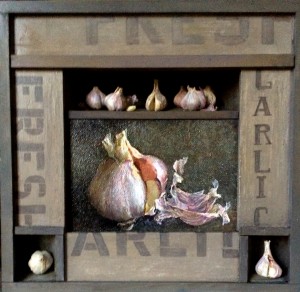 I think miniaturists know quite a lot about me, because I’ve been in this field for quite a long time, over 35 years, in fact. I’ve participated in all the major shows and my work is in the Kansas City National Museum of Toys and Miniatures, as well as other miniature museums.
I think miniaturists know quite a lot about me, because I’ve been in this field for quite a long time, over 35 years, in fact. I’ve participated in all the major shows and my work is in the Kansas City National Museum of Toys and Miniatures, as well as other miniature museums.
I have this saying which has become a motto of miniature clubs: miniatures are not beautiful because they are small. Miniatures require that we concentrate our attention in this contemporary world where people rush and rush. They cause people to stop and think about how beautiful the world is, and how much time was put into the work. That’s the joy of miniatures. The intention and joy of the artist demands attention by the viewer.
Master artist Natasha Beshenkovsky creates a wide array of miniature art including shadow boxes, paintings, sculptures, decorated period furniture in 1:12 scale. Her miniatures are included in many museum collections in the U.S. and abroad. For more on her process and works of art for sale, visit the Natasha Miniatures website.
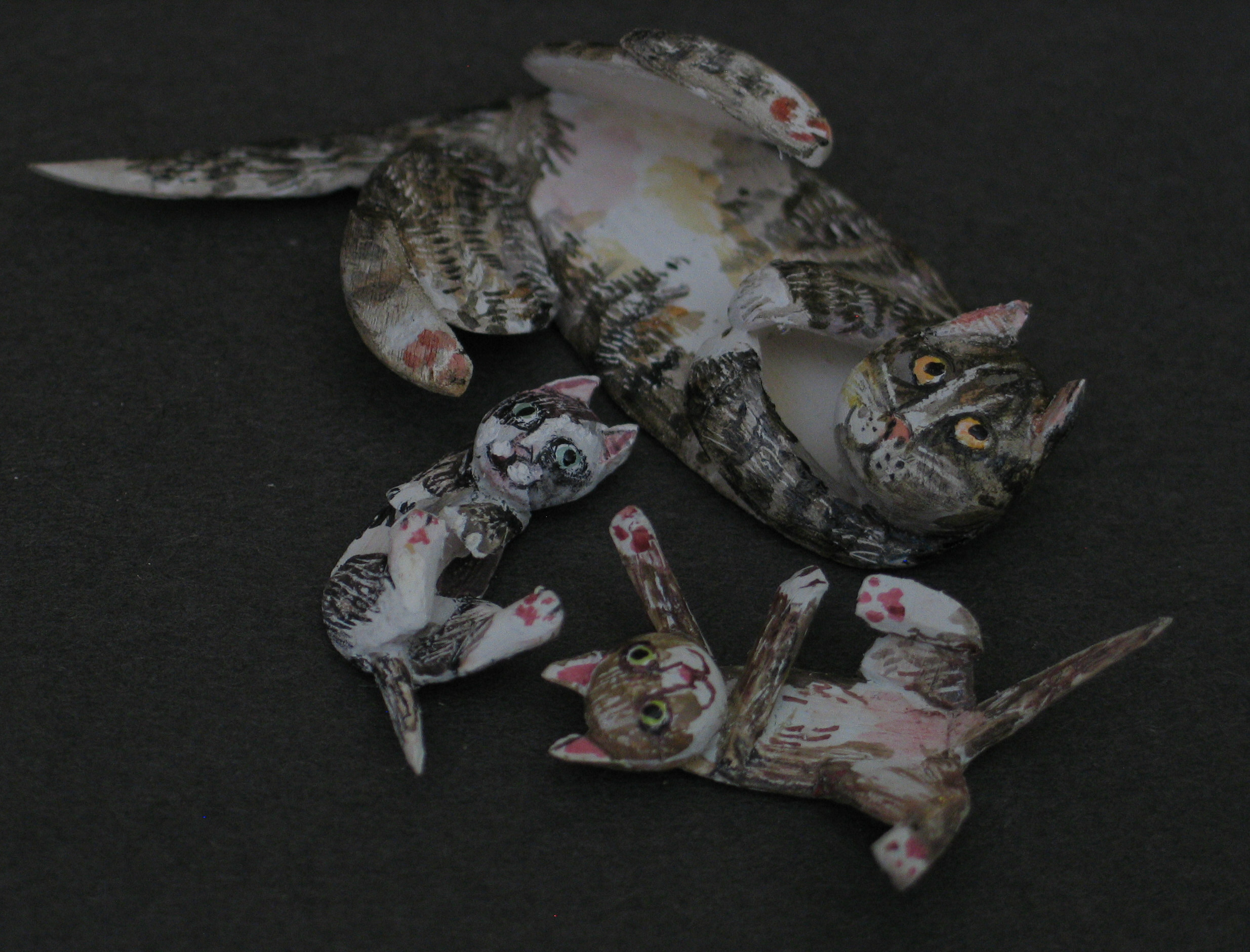
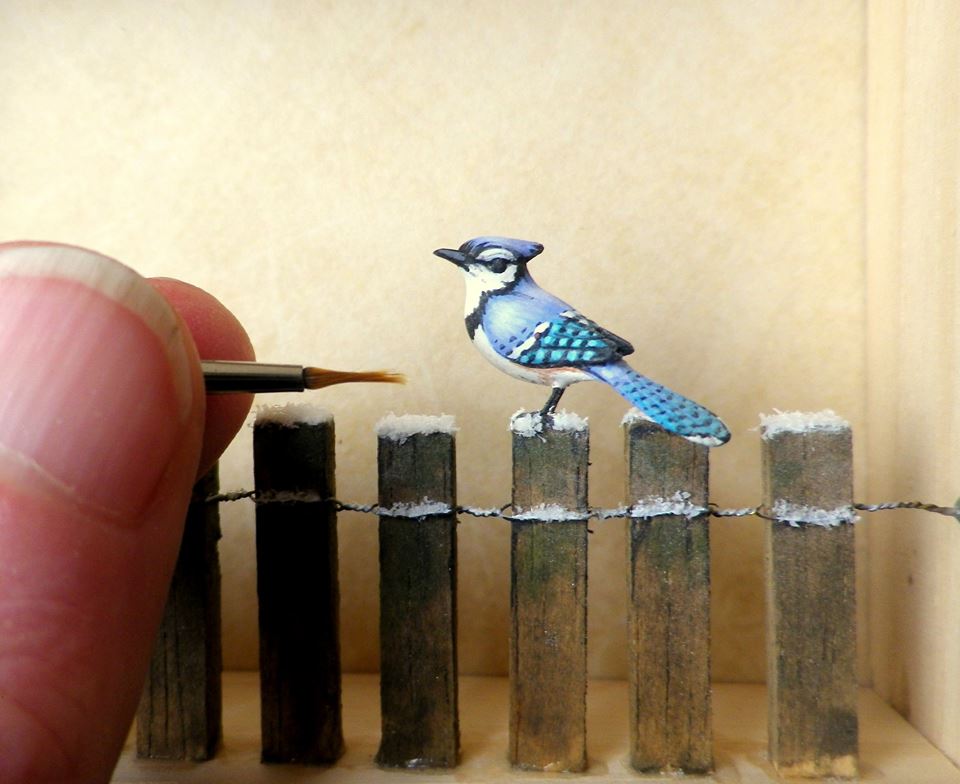
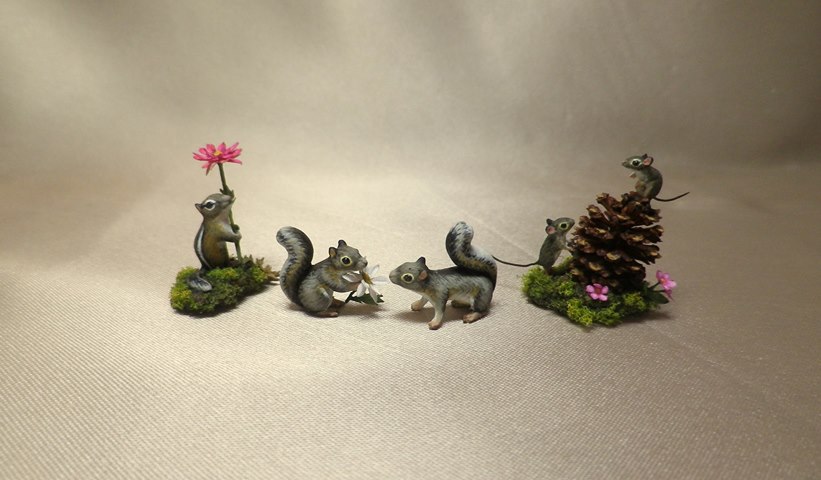
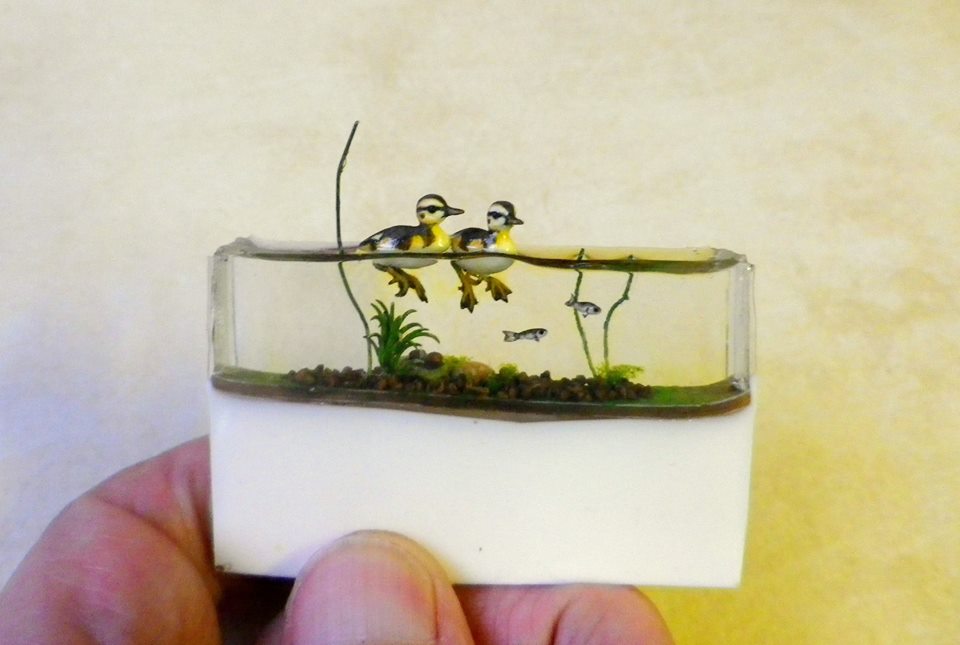
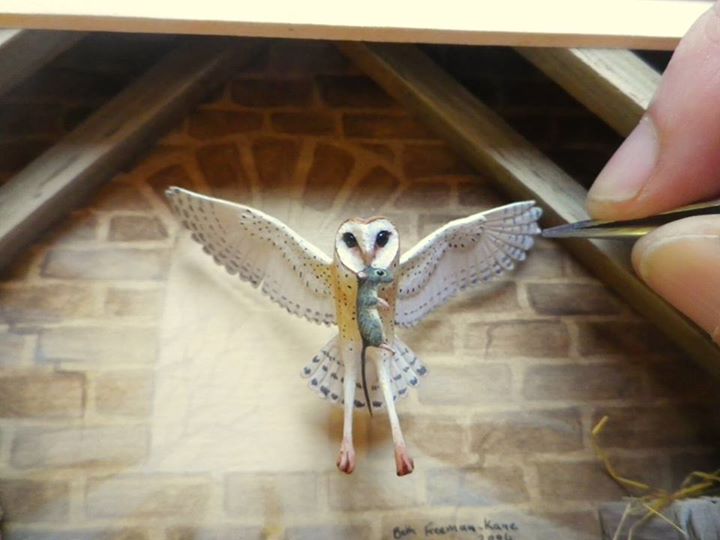
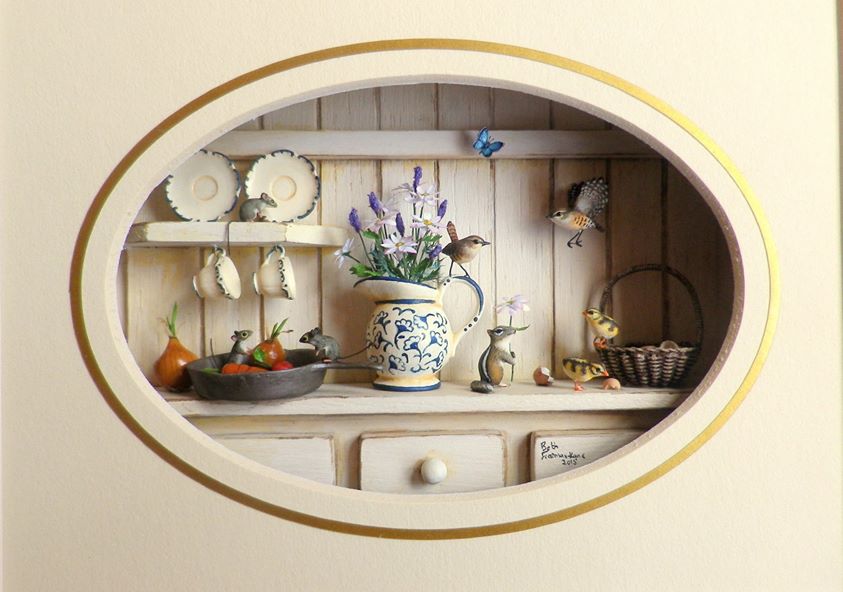
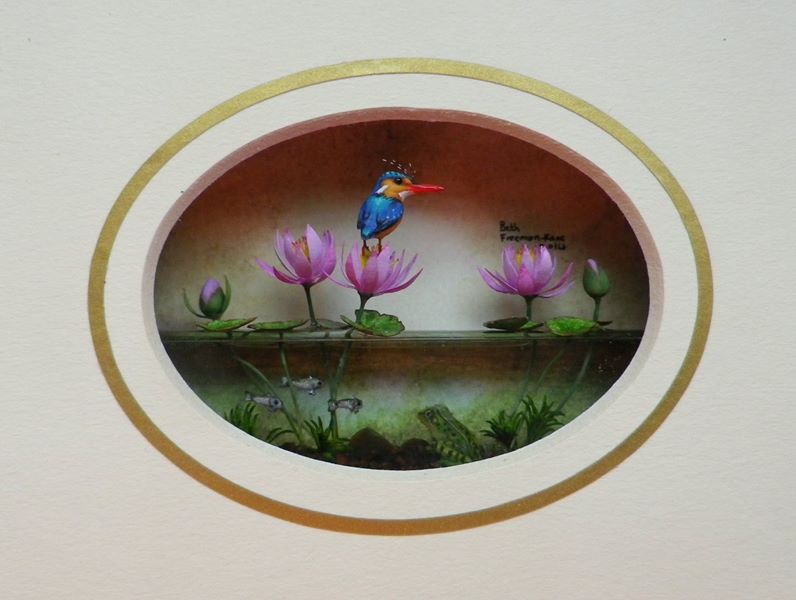
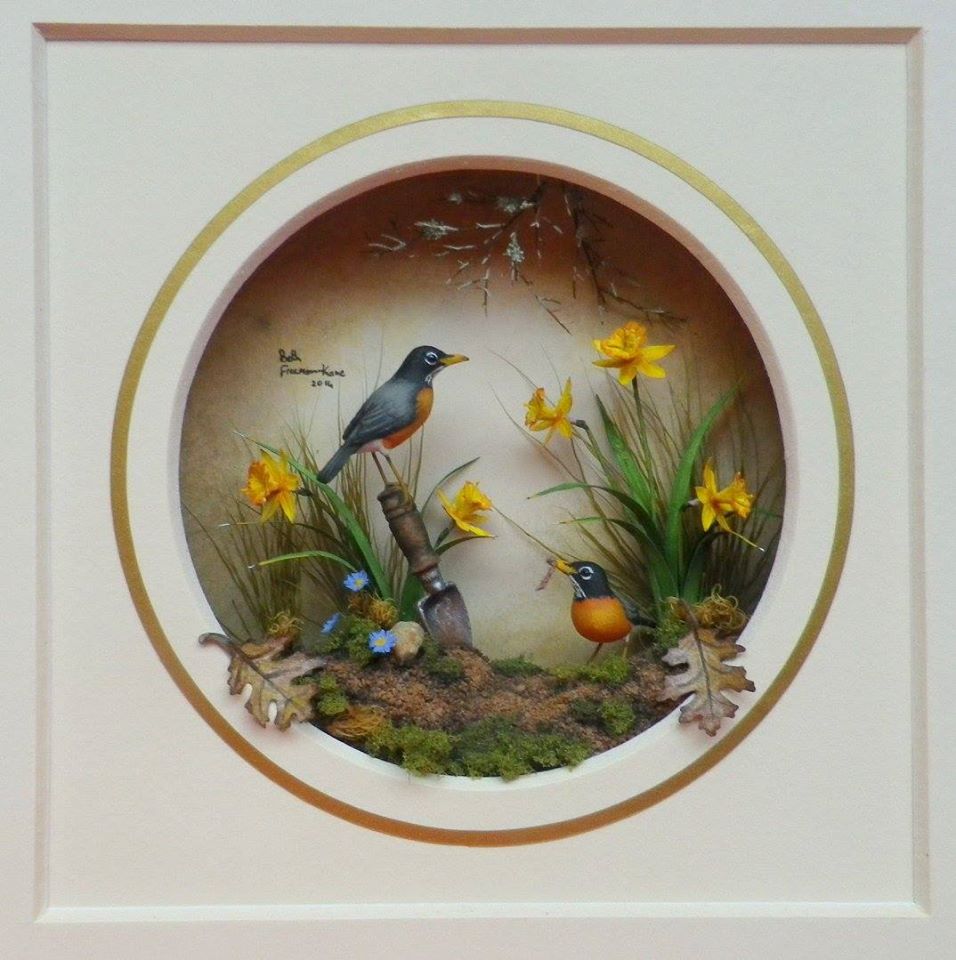

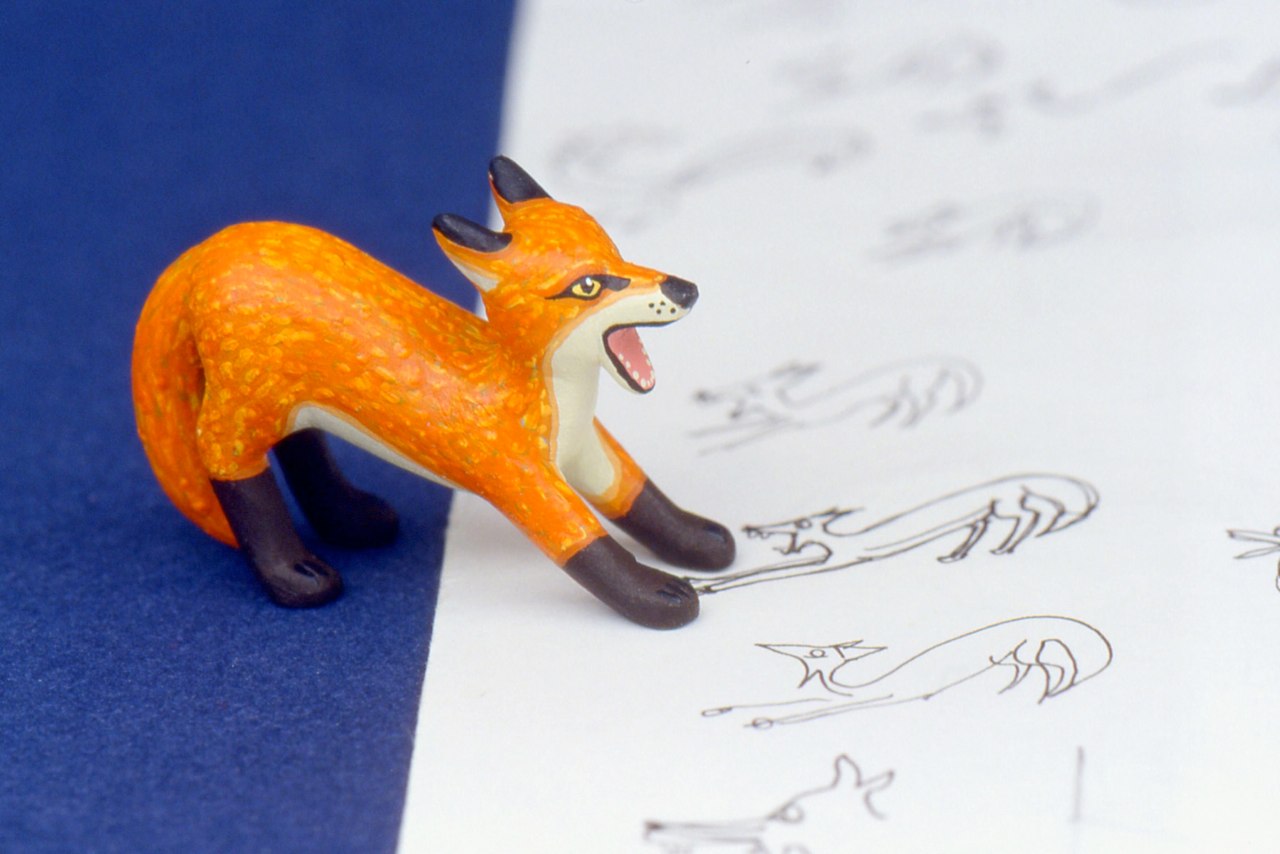
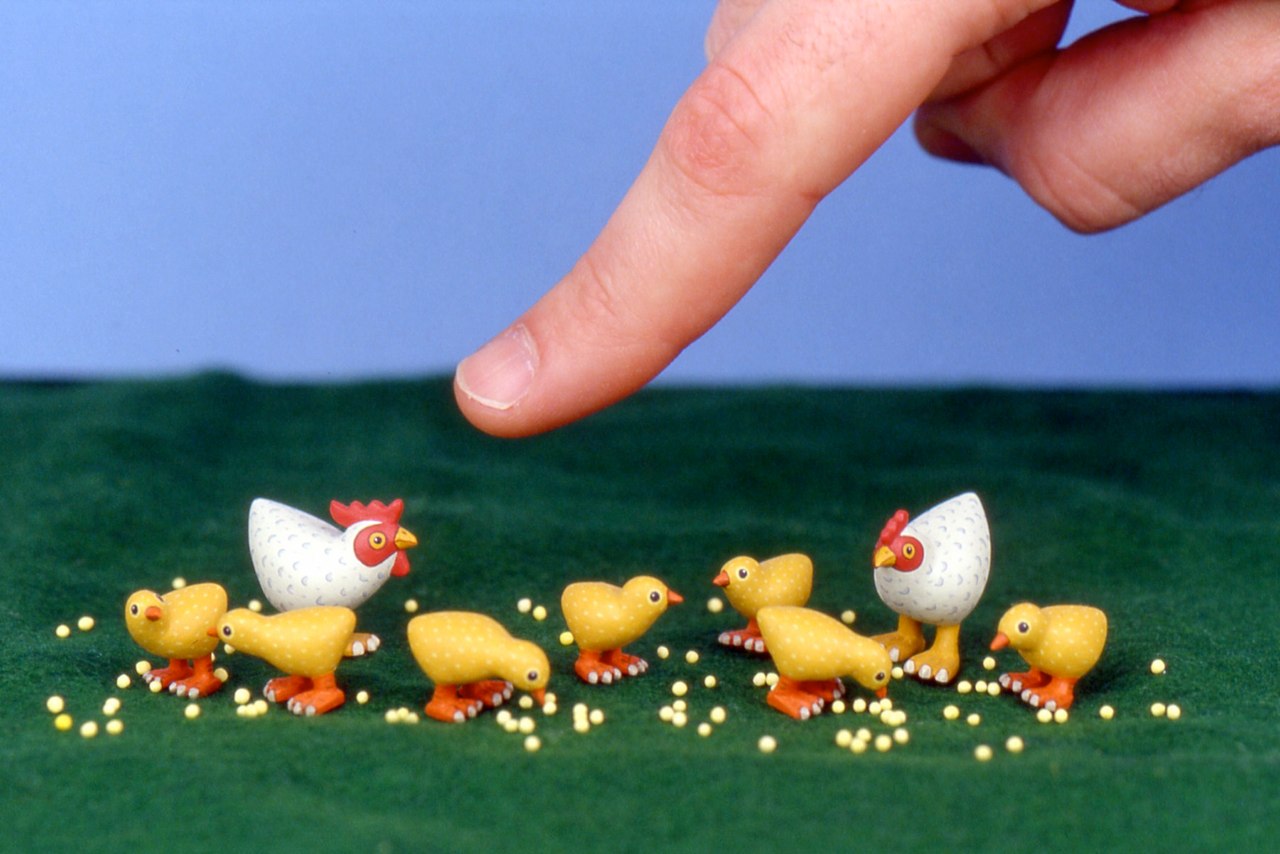
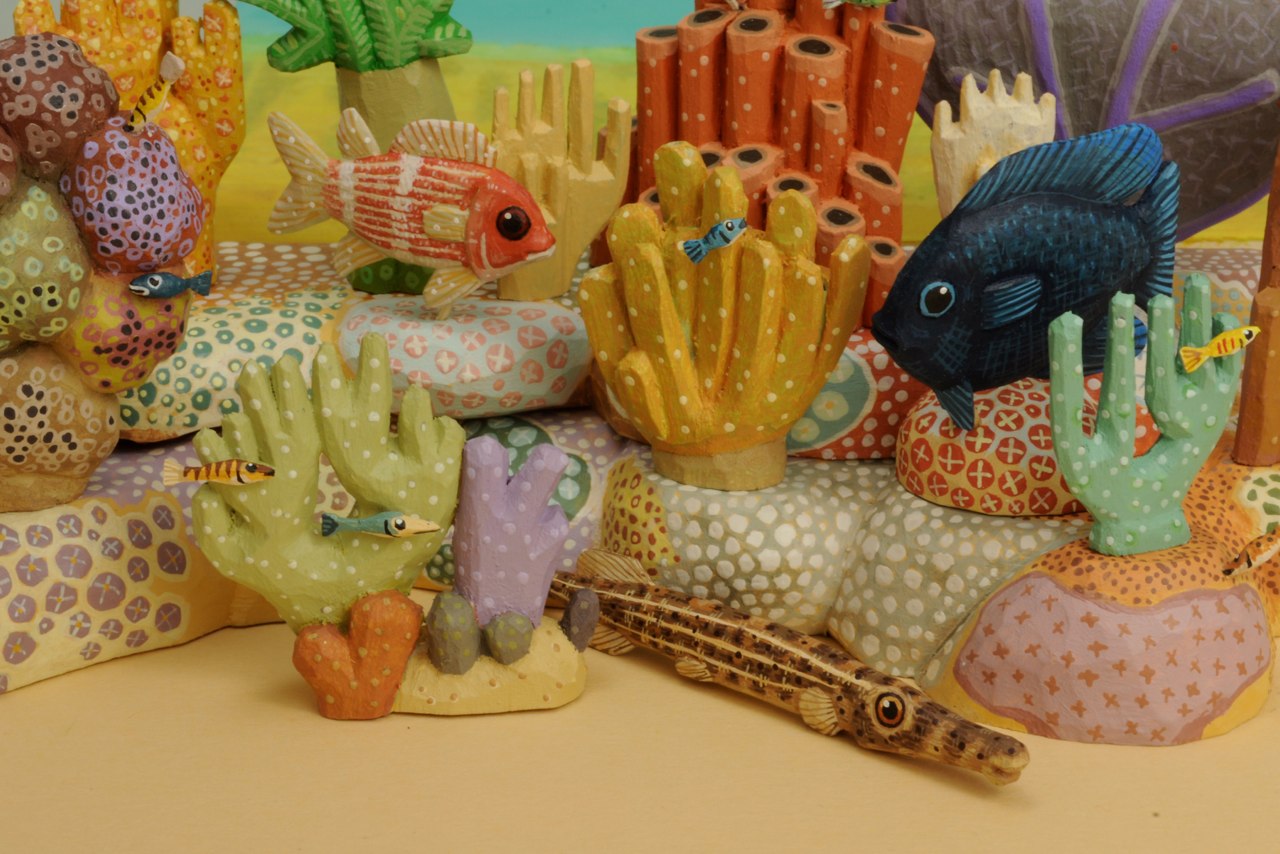
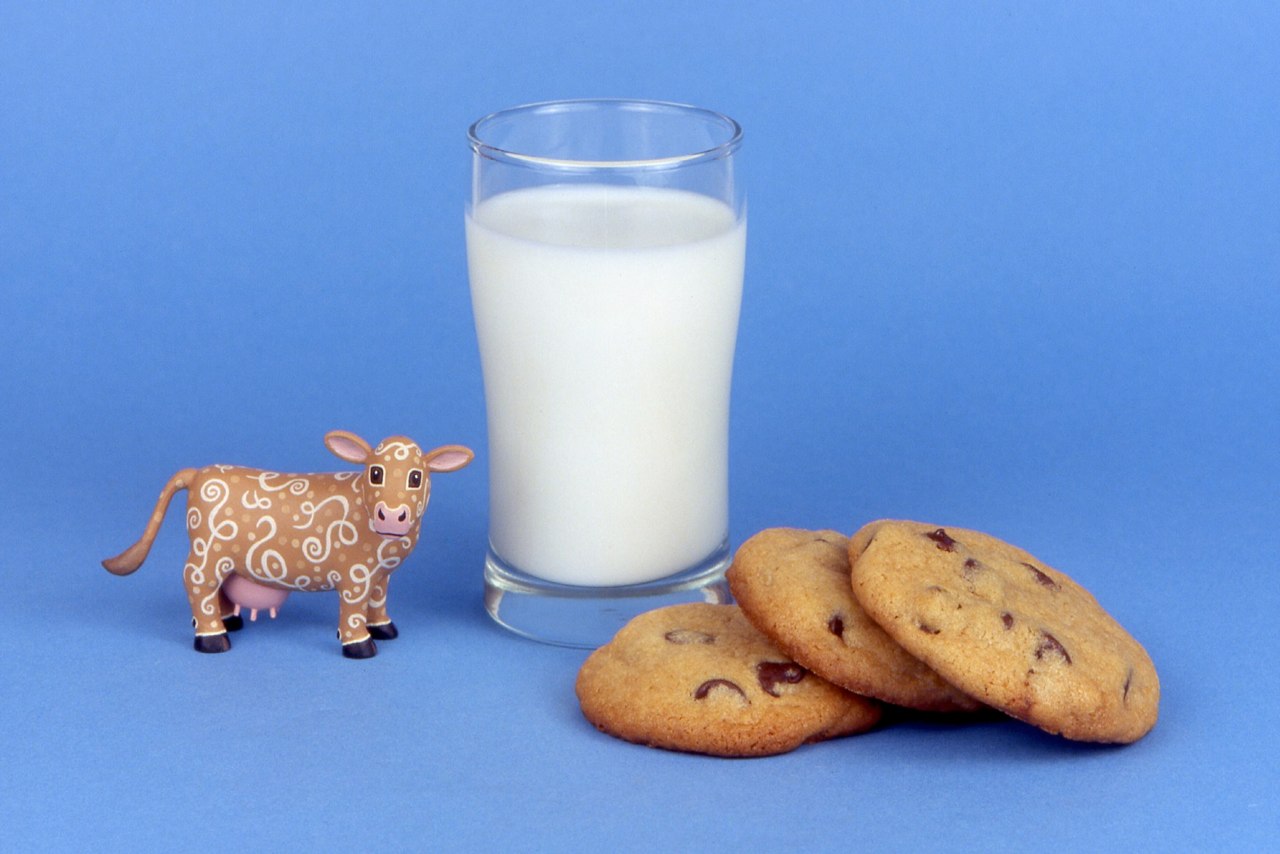
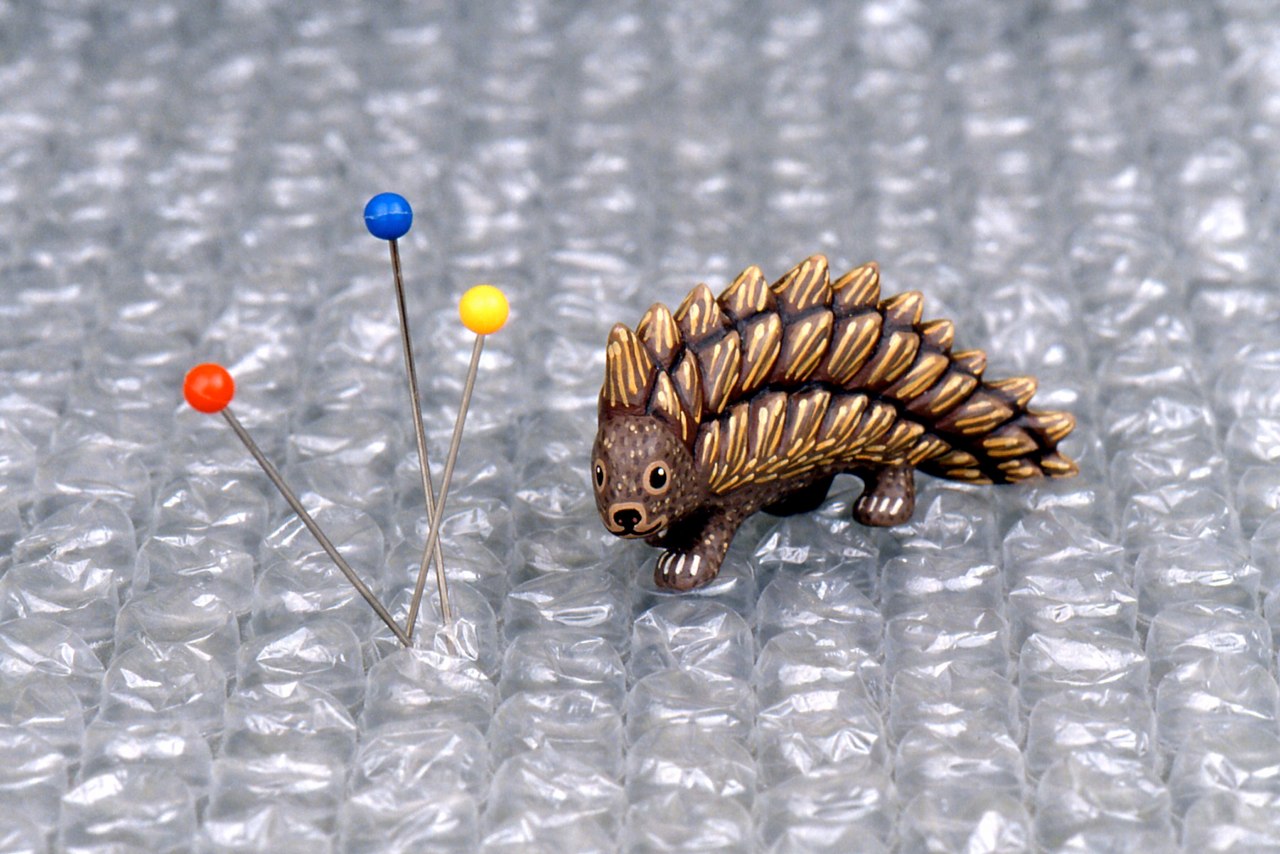
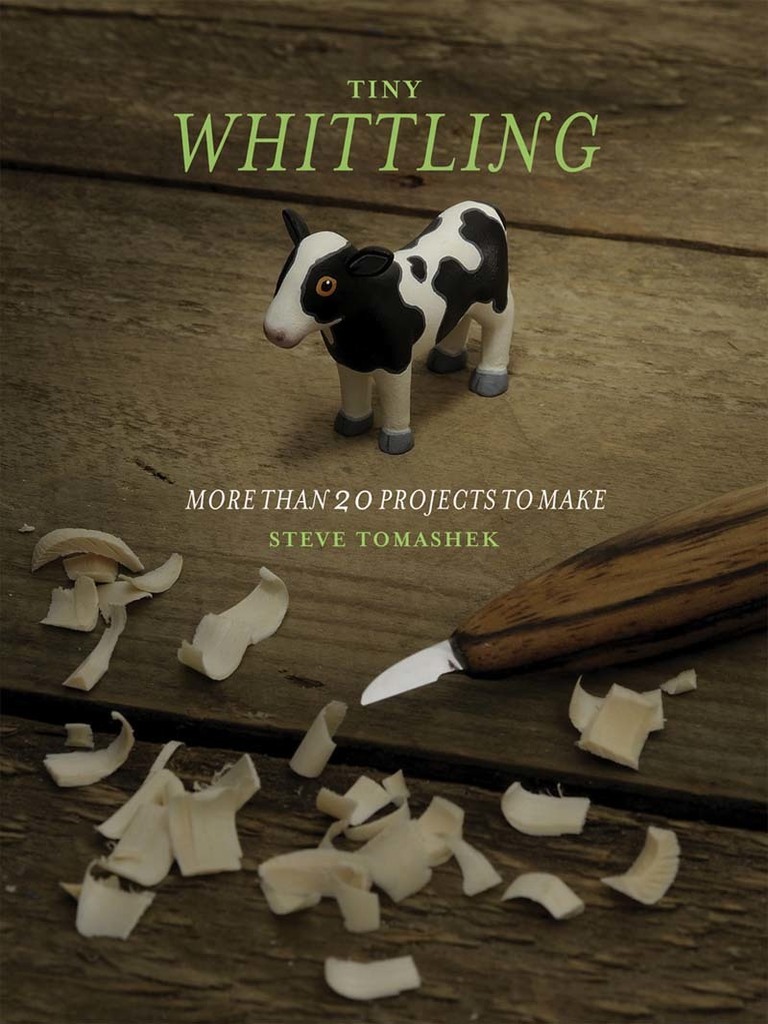 Carving every day provides a rhythm to my life. Previously, I would carve for 12-16 hours at a time and then crash. I have found a better balance today where I can divide my time between other projects. I enjoy writing, working on projects in the garden, and spending time with my wife and animals. I work on
Carving every day provides a rhythm to my life. Previously, I would carve for 12-16 hours at a time and then crash. I have found a better balance today where I can divide my time between other projects. I enjoy writing, working on projects in the garden, and spending time with my wife and animals. I work on 